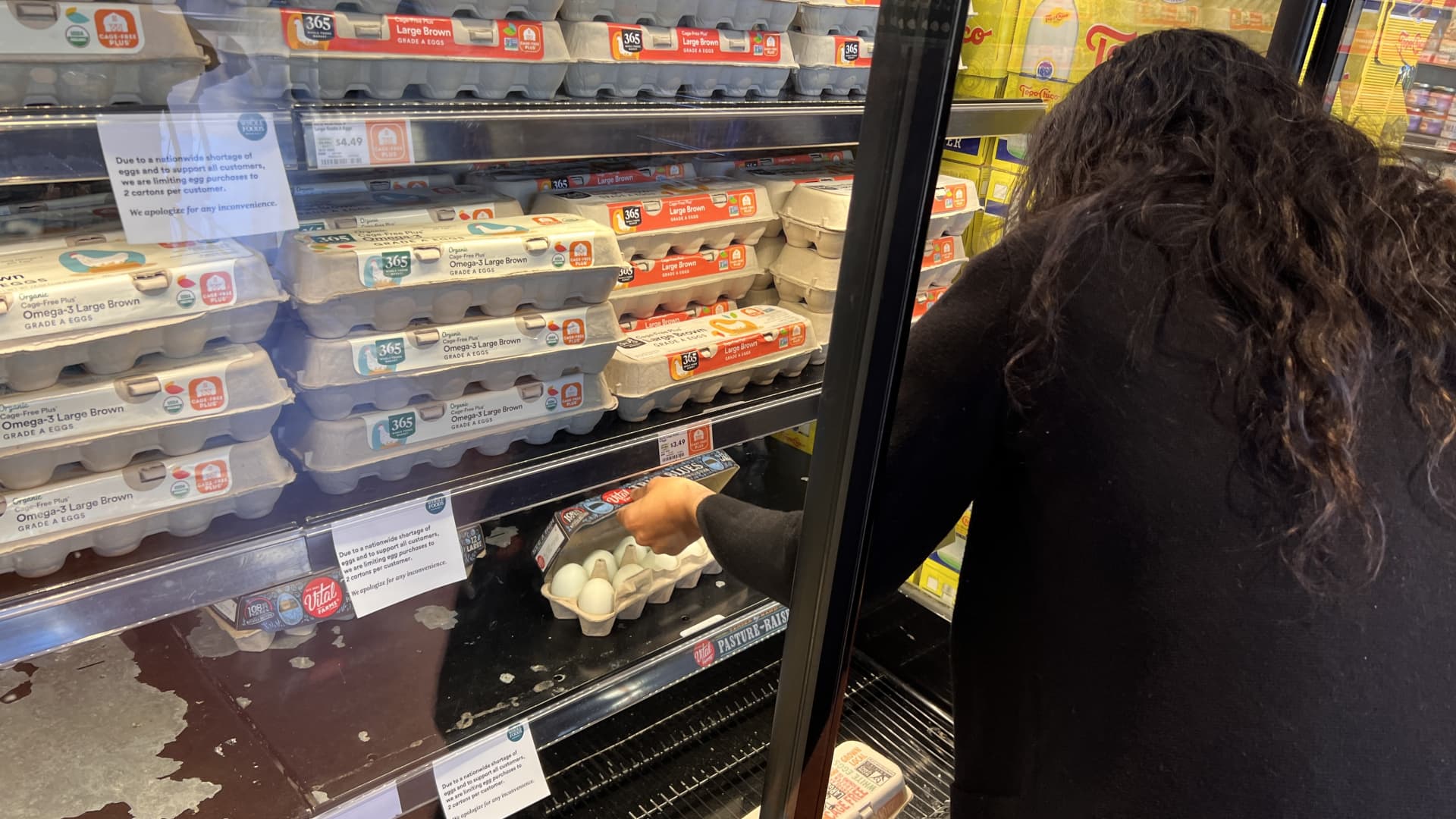Egg shelves are seen with a note apologizing to customers for the price increase after the reduction in productivity brought on by poultry fatalities caused by various illnesses, in San Mateo, California, United States on January 23, 2023.
Tayfun Coskun | Anadolu Agency | Getty Images
Consumers spent less in December even as an inflation measure considered key by the Federal Reserve showed the pace of price increases easing, the Commerce Department reported Friday.
Personal consumption expenditures excluding food and energy increased 4.4% from a year ago, down from the 4.7% reading in November and in line with the Dow Jones estimate. That was the slowest annual rate of increase since October 2021.
On a monthly basis, so-called core PCE increased 0.3%, also meeting estimates.
At the same time, consumer spending was even less than already-modest estimates, indicating that the economy slowed at the end of 2022 and contributing to expectations for a 2023 recession.
Spending adjusted for inflation declined 0.2% on the month, worse than the 0.1% drop that Wall Street had been anticipating. That came despite a 0.2% increase in income, which met estimates.
The numbers come with Fed officials closely watching to measure the impact their rate increases have had on the economy. In line with other recent economic data, they show inflation persisting but at a slower pace than the level that had driven price increases in mid-2022 to their fastest pace in more than 40 years.
Headline inflation rose 0.1% on a monthly basis and 5% from a year ago. That number, which includes the volatile food and energy components, was the lowest annual rate since September 2021.
The Fed watches core PCE closely as the measure takes into accounts changing consumer behavior, such as substituting lower price goods for higher-priced items, and strips out volatile food and energy prices.
In an effort to bring down runaway inflation, the central bank in 2022 raised its benchmark borrowing rate from near-zero in March to a target range that’s now 4.25%-4.5%.
Markets are nearly certain of another quarter percentage point increase at next week’s Federal Open Market Committee policy, followed by the likelihood of a similar-sized hike in March.
The Fed is then expected to pause while it surveys the impact that the series of aggressive hikes has had on the economy. Officials hope to cool a red-hot labor market and reduce supply-demand imbalances that have led to the inflation surge.
This is breaking news. Please check back here for updates.

